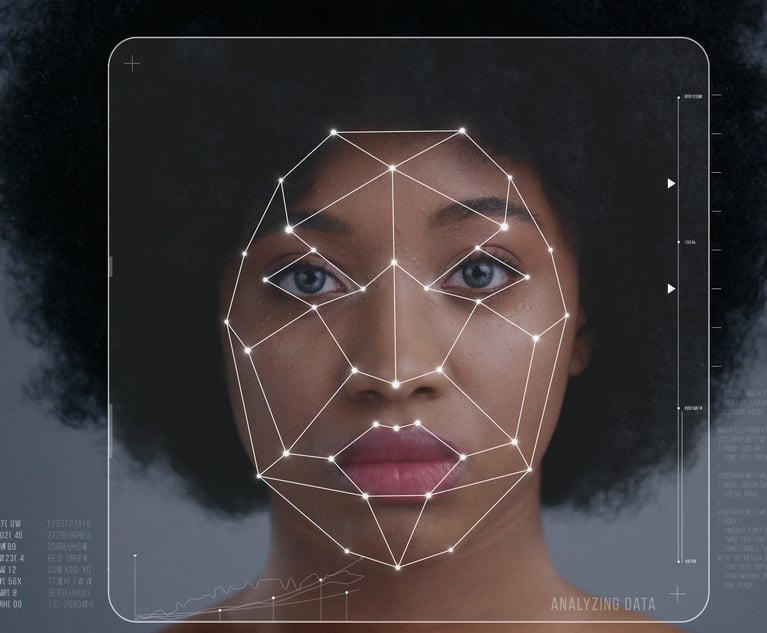 Credit: Vlad Kochelaevskiy / Shutterstock.com
Credit: Vlad Kochelaevskiy / Shutterstock.com The ERA: A Century-Long Fight to Achieve Equal Rights for Women
"If I could choose an amendment to add to the Constitution, it would be the Equal Rights Amendment." - Ruth Bader Ginsberg
June 03, 2021 at 11:00 AM
11 minute read
Although the 19th Amendment provided women with the right to vote over 100 years ago, and women have made significant progress since that time, the U.S. Constitution still does not provide women with full legal gender equality. In the early 20th century, Suffragists, including Alice Paul, Ida Wells, and many others, were instrumental in pursuing progress for women's rights.
New Jersey Suffragist and lawyer Alice Paul drafted the Equal Rights Amendment (ERA and/or the Amendment) nearly 100 years ago, but it still has not been adopted. Now that the requisite 38 states have ratified the ERA, its ratification would seem within reach, but considerable resistance and obstacles remain. To fully understand the ERA and challenges to its passage and ratification, it is critical to consider our nation's history and the long-standing battle for gender equality.
This content has been archived. It is available through our partners, LexisNexis® and Bloomberg Law.
To view this content, please continue to their sites.
Not a Lexis Subscriber?
Subscribe Now
Not a Bloomberg Law Subscriber?
Subscribe Now
NOT FOR REPRINT
© 2025 ALM Global, LLC, All Rights Reserved. Request academic re-use from www.copyright.com. All other uses, submit a request to [email protected]. For more information visit Asset & Logo Licensing.
You Might Like
View All
In 2-1 Ruling, Court Clears Way for Decade-Old Wrongful Imprisonment Suit
5 minute read
Union Leader Awarded $662K Judgment Against Employer in Decade-Old Wiretap Suit
5 minute read
Virtua Drug Tests Pregnancy Patients Without Consent, NJ Attorney General Alleges in New Suit
3 minute read
'Bewitched by the Technology': $300K to Settle Faulty Facial Recognition
4 minute readTrending Stories
- 1Houston-Based Law Firm Overcomes Defamation Suit for Website Warning
- 2The Time Is Now for Employers to Assess Risk of Employees’ Use of DeepSeek
- 3Big Law Partner Co-Launches Startup Aiming to Transform Fund Formation Process
- 4How the Court of Public Opinion Should Factor Into Litigation Strategy
- 5Debevoise Lures Another SDNY Alum, Adding Criminal Division Chief
Who Got The Work
J. Brugh Lower of Gibbons has entered an appearance for industrial equipment supplier Devco Corporation in a pending trademark infringement lawsuit. The suit, accusing the defendant of selling knock-off Graco products, was filed Dec. 18 in New Jersey District Court by Rivkin Radler on behalf of Graco Inc. and Graco Minnesota. The case, assigned to U.S. District Judge Zahid N. Quraishi, is 3:24-cv-11294, Graco Inc. et al v. Devco Corporation.
Who Got The Work
Rebecca Maller-Stein and Kent A. Yalowitz of Arnold & Porter Kaye Scholer have entered their appearances for Hanaco Venture Capital and its executives, Lior Prosor and David Frankel, in a pending securities lawsuit. The action, filed on Dec. 24 in New York Southern District Court by Zell, Aron & Co. on behalf of Goldeneye Advisors, accuses the defendants of negligently and fraudulently managing the plaintiff's $1 million investment. The case, assigned to U.S. District Judge Vernon S. Broderick, is 1:24-cv-09918, Goldeneye Advisors, LLC v. Hanaco Venture Capital, Ltd. et al.
Who Got The Work
Attorneys from A&O Shearman has stepped in as defense counsel for Toronto-Dominion Bank and other defendants in a pending securities class action. The suit, filed Dec. 11 in New York Southern District Court by Bleichmar Fonti & Auld, accuses the defendants of concealing the bank's 'pervasive' deficiencies in regards to its compliance with the Bank Secrecy Act and the quality of its anti-money laundering controls. The case, assigned to U.S. District Judge Arun Subramanian, is 1:24-cv-09445, Gonzalez v. The Toronto-Dominion Bank et al.
Who Got The Work
Crown Castle International, a Pennsylvania company providing shared communications infrastructure, has turned to Luke D. Wolf of Gordon Rees Scully Mansukhani to fend off a pending breach-of-contract lawsuit. The court action, filed Nov. 25 in Michigan Eastern District Court by Hooper Hathaway PC on behalf of The Town Residences LLC, accuses Crown Castle of failing to transfer approximately $30,000 in utility payments from T-Mobile in breach of a roof-top lease and assignment agreement. The case, assigned to U.S. District Judge Susan K. Declercq, is 2:24-cv-13131, The Town Residences LLC v. T-Mobile US, Inc. et al.
Who Got The Work
Wilfred P. Coronato and Daniel M. Schwartz of McCarter & English have stepped in as defense counsel to Electrolux Home Products Inc. in a pending product liability lawsuit. The court action, filed Nov. 26 in New York Eastern District Court by Poulos Lopiccolo PC and Nagel Rice LLP on behalf of David Stern, alleges that the defendant's refrigerators’ drawers and shelving repeatedly break and fall apart within months after purchase. The case, assigned to U.S. District Judge Joan M. Azrack, is 2:24-cv-08204, Stern v. Electrolux Home Products, Inc.
Featured Firms
Law Offices of Gary Martin Hays & Associates, P.C.
(470) 294-1674
Law Offices of Mark E. Salomone
(857) 444-6468
Smith & Hassler
(713) 739-1250






